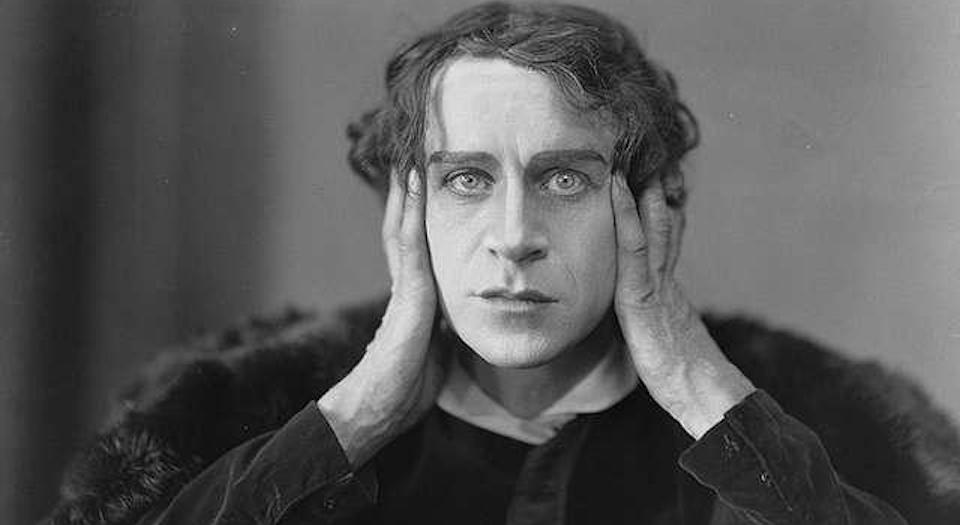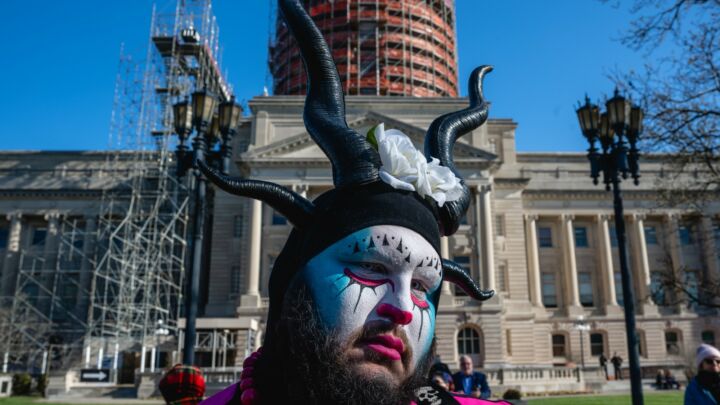
Long-read
Hegel on Hamlet
In Shakespeare’s most famous character, Hegel saw a tragic disgust with existence.
GWF Hegel is the philosopher of the tragic. He is the philosopher with the deepest understanding of the nature of tragedy: its internal movement, contradictions and collisions – what we might call the collisional character of tragedy. If that manner of conceiving experience that Hegel calls dialectics can be understood as thinking in movement, then it is arguable that dialectics has its genesis in tragedy, or at least in a certain understanding of tragedy. Although it might be said that other thinkers – like Friedrich Schelling, his erstwhile roommate – also see tragedy dialectically, the vital difference between them and Hegel turns on the question of history. Any philosophical idealisation of tragedy that lacks a historical understanding of art’s unfolding is empty formalism. As the 20th-century thinker Walter Benjamin notes, what he calls ‘the philosophy of tragedy’ is a ‘theory of the moral order of the world, without any reference to historical content, in a system of generalised sentiments’ (1).
What is misguided in the multiple iterations of ‘the philosophy of tragedy’ is its universalistic ahistoricism, usually based on a series of metaphysical assumptions about a purported human nature.
For Hegel, and this is already clear from his reading of Sophocles’ Antigone in the Phenomenology of Spirit onward, tragedy is the aesthetic articulation of the historical disintegration of ethical life, or Sittlichkeit, through the strife of civil war and the life-and-death struggle between essential elements of the political life of the city-state. In tragedy, the substance of ethical life divides against itself, dissolving in war and splitting into a multitude of separate individual atoms. This passes over into the impotent stoicism of the solitary self in a world defined by law – that is, Rome – and the experience of modern self-alienation that Hegel associates with the word Kultur. History must form an essential part of any account of tragedy. This is where we may join Hamlet.
Moving (not unproblematically, it must be acknowledged) from the early Hegel of the Phenomenology to the late Hegel of the Aesthetics – and indeed the 1,300 pages of the Aesthetics conclude and culminate with a stunning interpretation of Hamlet – in modern tragedy individuals do not act for the sake of the substance of ethical life. What presses for satisfaction, rather, is the subjectivity of their private character. In ancient tragedy, the conflict at the heart of the substance of ethical life finds expression in opposed but equally justified characters, each of whom embodies a clear pathos: Antigone versus Creon, or Orestes versus Clytemnestra. However, if conflict in ancient tragedy finds articulation in the externality of substance, then in modern tragedy the conflict is internal to subjectivity.
Hegel asserts that, in the portrayal of individual characters, Shakespeare stands ‘at an almost unapproachable height’, making his creations ‘free artists of their own selves’ (2). As such, Shakespeare’s tragic characters are ‘real, directly living, extremely varied’ and possessing a ‘sublimity and striking power of expression’. Yet – and here comes the dialectical underside of this claim – creatures like Hamlet lack any resolution and capacity for decision. They are dithering figures in the grip of ‘a twofold passion which drives them from one decision or one deed to another simultaneously’. In other words, they are Hamletised, vacillating characters inwardly divided against themselves. Upheld only by the force of their conflicted subjectivity, characters like Hamlet or Lear either plunge blindly onward or allow themselves to be lured to their avenging deed by external circumstances, led along, that is, by contingency.
In the vast sweep of an ancient dramatic trilogy, like Aeschylus’s Oresteia, what is at stake in the agon, or dramatic conflict, is eternal justice shaped by the power of fate, which saves the substance of the ethical life of the city against individuals, like Orestes and Clytemnestra, who were becoming too independent and colliding violently with each other. Hegel insists, and we think he is right, that if a similar justice appears in modern tragedy, then it is more like criminal justice, where – as with Macbeth or with Lear’s daughters – a wrong has been committed and the protagonists deserve the nasty demise that’s coming to them. Tragic denouement in Shakespearean tragedy is not the rigorous working out of fate, but ‘purely the effect of unfortunate circumstances and external accidents which might have turned out otherwise and produced a happy ending’ (3). Hegel enjoyed a happy ending, as we will see presently, but the point is that the modern individual must endure the contingency and fragility of ‘all that is mundane and must endure the fate of finitude’.
Here Hegel’s remarks on Hamlet begin to cut much deeper – the problem is that we cannot bear this contingency. Hegel argues that we feel a pressing demand for a necessary correspondence between those fine characters’ external circumstances and their inner nature.
Thus, we want Hamlet’s death not simply to be the effect of chance, owing to the accidental switch of poisoned rapiers. The Tragicall Historie of Hamlet, Prince of Denmarke affects its audience profoundly, and it seems that there is a deep need – at once aesthetic and moral – for something greater than mere accident. It is as if there is something unbearable about the contingency of life that finds articulation in Hamlet and elsewhere in Shakespeare. This is what leads, we think, to Benjamin’s claim that Hamlet is a Christian tragedy of providence or, indeed, the nostalgic memory of that Christian longing in the work of Carl Schmitt. It is the yearning for a redemptive artwork that would both reveal our modern, alienated condition and heal it. It is a nostalgic yearning for reconciliation between the individual and the cosmic order that one finds throughout criticism of Shakespeare’s work.
Such nostalgia is one way of interpreting the character of Hamlet – that is, he is bound by a longing that is his very paralysis. From his warped idealisation of his father as a lost Hyperion, to his dream of a perfected act that does not overstep the modesty of nature and strikes at the exactly right time, to his overblown rage centered on the thought of multifarious villains – ‘O villain, villain, smiling, damnèd villain!… That one may smile, and smile, and be a villain’ – Hamlet might be seen as a conservative rebel against the contingency and atomised anomie of the new social order. And, not to belabour the Freudian points, his chief complaints centre on the figures of his Oedipal triangle – himself, his mother, and Claudius – with the dead father propped up as all that is right in a world gone to hell. Perhaps it is this yearning for a Catholic Shakespeare that must be given up in order to see Hamlet aright and see ourselves in its light. Perhaps we will have to dispense with the ghost’s prayer for an unadulterated life, for Catholic absolution, for an absolute.
Hegel doesn’t put it as strongly as this, and, in any case, he has a dialectical trump card up his sleeve: tragedy is overcome by comedy, and both are overcome by philosophy. The failure of aesthetic reconciliation leads to the requirement for philosophical reconciliation. For Hegel, not without some nostalgia for the loss of Greek ethical life and his deep admiration for Sophocles, comedy supplants tragedy, and comedy is the very element in which art dissolves and prepares the passage for conceptual elaboration, namely philosophy. Comedy – and one thinks of Aristophanes, whom Hegel constantly praises, as well as Shakespeare’s comedies, and also of Hegel’s wonderful reading of Diderot’s Rameau’s Nephew in the Phenomenology of Spirit – is the raising of art to the level of cognition, where it then dissolves. Hegel’s system is a comedy and has to be a comedy, insofar as history culminates with the institutional expression of freedom in the form of the modern state. Funny. This is where we could begin a metacritique of Hegel, along the lines one can find in the very young Marx (4). But the aesthetic point is that perhaps Hegel will always have the last laugh, that comedy stands higher than tragedy, and that the true comédie humaine is philosophy.
This is why Hegel likes a happy ending. He once made a brilliant remark that might echo in the ears of contemporary partisans of trauma, loss, and aesthetic miserabilism:
‘I must admit that for my part a happy denouement is to be preferred. And why not? To prefer misfortune just because it is misfortune, instead of a happy resolution, has no other basis but a superior sentimentality which indulges in grief and suffering and finds more interest in them than in the painless situations that it regards as commonplace.’ (5)
The tragedy of suffering, such as we find in Sophocles, is only ethically justified when it serves some higher outlook, such as fate, otherwise it is simply an Eeyore-esque wallowing in misery (which, incidentally, makes Hegel closer to Winnie the Pooh). A happy ending would be better. If art – and Hegel is thinking in particular of Greek statuary – is the unity of the idea and the appearance in sensuous ideality, then comedy can only present this unity as self-destruction. For Hegel, the absolute can no longer be contained within aesthetic form. Comedy is art’s dissolution and its passage beyond itself. This is why comedy is the entrance into philosophy.
And of course the turn from comedy toward philosophy, out from one’s being-as-misery-guts, is already foreshadowed by Hamlet. After the encounter with the ghost, Hamlet cautions Horatio, ‘There are more things in heaven and earth, Horatio, / Than are dreamt of in your philosophy’. He then promptly (and weirdly, we might add) tells him that his plan is to put on an antic disposition. The next time we hear from Hamlet, he is the clownish provocateur in the fishmonger scene with Polonius, followed by the Hamlet of satirical philosophical sparring with Rosencrantz and Guildenstern. The oscillation between tragicomedy and philosophy is an imbroglio best summed up by Hamlet himself as he hurtles toward the limits of rationality:
Hamlet: O God, I could be bounded in a nut shell and count myself a king of infinite space, were it not that I have bad dreams.
Guildenstern: Which dreams indeed are ambition, for the very substance of the ambitious is merely the shadow of a dream.
Hamlet: A dream itself is but a shadow.
Rosencrantz: Truly, and I hold ambition of so airy and light a quality that it is but a shadow’s shadow.
Hamlet: Then are our beggars bodies, and our monarchs and outstretched heroes but the beggars’ shadows. Shall we to court? For, by my fay, I cannot reason.
Who else other than Hegel could follow Hamlet’s reasoning here, whereby substance dialectically reverses into shadow, infinite space is a bad dream, ambition is a ghost that takes flight in sleep, and a monarch is found only in the shade of a beggar’s body. Hamlet’s self-consciousness is the Hegelian prowess of the tautological infinity of a nutshell— an identity that is its own undoing. What aesthetic reconciliation can there be? Perhaps this helps explain TS Eliot’s statement that Hamlet is an artistic failure, along with his scathing critique that the longing for creative power in the minds of critics has led to a particular weakness, where instead of studying a work of art they find only their semblable. Goethe sees Hamlet as Goethe, and Coleridge sees Hamlet as Coleridge.
The final scene of Hamlet, like the final scene of King Lear, is not the triumph of some Christian idea of providence nor is it any rebirth of Attic tragedy. It is simply a stage full of corpses, what Theodor Adorno perspicuously sees as a crowd of puppets on a string after a killing spree, and what James Joyce sees, in an eerily prophetic remark, as a ‘forecast of the concentration camp’. In other words, Hamlet is a Trauerspiel whose force is tragicomic and whose macabre ending verges on the melodramatic. As Melville writes of Hamlet in Pierre; or, The Ambiguities, he falls ‘dabbling in the vomit of his loathed identity’.
But there is one further and fascinating twist in the tail of Hegel’s reading of Hamlet. Looked at from the outside, Hamlet’s death might seem to be accidentally caused by the unfortunate switcheroo of swords. But, on two occasions, Hegel advances a brief but perceptive psychological profile of the Danish prince. What he finds inside Hamlet is morbidity, melancholy, worry, weakness, and, most of all, in a word repeated three times in these passages, disgust. Hegel writes:
‘But death lay from the beginning in the background of Hamlet’s mind. The sands of time do not content him. In his melancholy and weakness, his worry, his disgust at all the affairs of life, we sense from the start that in all his terrible surroundings he is a lost man, almost consumed by inner disgust before death comes to him from outside.’ (6)
Hamlet is a lost man. He is the wrong man. He should never have been commanded by the ghost to avenge his murder. His disgust with the world induces not action but acedia, a slothful lethargy. Hamlet just lacks the energy. As Hegel writes:
‘His noble soul was not made for this kind of energetic activity; and, full of disgust with the world and life, what with decision, proof, arrangements for carrying out his resolve, and being bandied from pillar to post, he eventually perishes owing to his own hesitation and a complication of external circumstances.’ (7)
It is our contention that what is caught sight of by Hegel here is a Hamlet Doctrine that turns on the corrosive dialectic of knowledge and action, where the former disables the latter and insight into the truth induces a disgust with existence. He cannot, or will not, imagine anything more in the gap that opens up. Rubbernecking the chaos and wreckage of the world that surround him while chattering and punning endlessly, Hamlet finally finds himself fatally struck and strikes out impetuously, asking Horatio to sing him a lullaby. What is so heroic about Hamlet’s disgust? Do we even like him?
Simon Critchley is a philosopher. He teaches at the New School in New York. And Jamieson Webster is a psychoanalyst in New York City. She teaches at Eugene Lang College and New York University.
This is an edited extract from Stay, Illusion!: The Hamlet Doctrine, by Simon Critchley and Jamieson Webster. (Buy this book from Amazon(UK).)
(1) The Origin of German Tragic Drama, by Walter Benjamin, Verso, 2009, p101
(2) Aesthetics: Lectures on Fine Art, by GWF Hegel, OUP, 1975, p217, p228
(3) Aesthetics: Lectures on Fine Art, by GWF Hegel, OUP, 1975, p231
(4) We are thinking of Marx’s ‘Critique of Hegel’s Doctrine of the State’, from 1843, when Marx was in his mid-twenties. See Early Writings, by Karl Marx (edited by Lucio Colletti), Penguin, 1975, pp57-198
(5) Aesthetics: Lectures on Fine Art, by GWF Hegel, OUP, 1975, p1,232
(6) Aesthetics: Lectures on Fine Art, by GWF Hegel, OUP, 1975, pp1,231-1,232
(7) Aesthetics: Lectures on Fine Art, by GWF Hegel, OUP, 1975, p1,232
Portrait picture: Retrato de joven con calavera, Bernardino Licinio, 1524.
No paywall. No subscriptions.
spiked is free for all.
Donate today to keep us fighting.
Donate onlineTo enquire about republishing spiked’s content, a right to reply or to request a correction, please contact the managing editor, Viv Regan.







Comments
Want to join the conversation?
Only spiked supporters and patrons, who donate regularly to us, can comment on our articles.